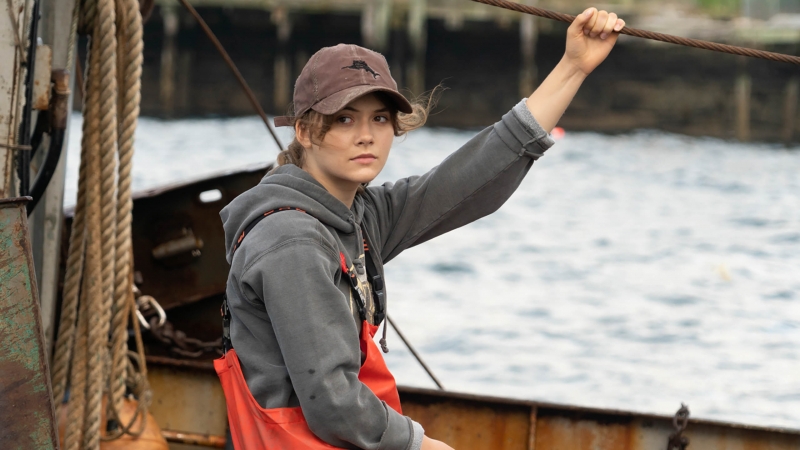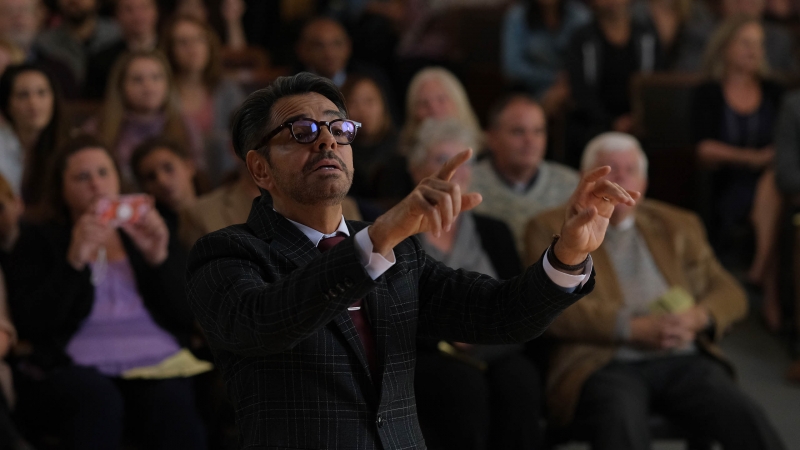Interview: Costume Designer Brenda Abbandandolo Talks Sundance Premiere of CODA, Starring Marlee Matlin & More
CODA tells the story of Ruby, the only hearing member of a deaf family, who is torn between pursuing her dream and helping to keep her family's business afloat.

Costume designer Brenda Abbandandolo has worked extensively in both the worlds of theatre and film, showcasing her incredible eye for detail and creative passion in a long list of award-winning projects. Her on-screen projects have included SNL, THE WOLF HOUR with Naomi Watts, the Oscar-nominated and Golden Globe-winning THE DISASTER ARTIST, AN AMERICAN PICKLE directed by Brandon Trost and starring Seth Rogen, and others. For theatre, she serves as the associate costume designer for the New York theater company THE TEAM, recently costume designed the live internet play RUSSIAN TROLL FARM, designed Dave Malloy and Rachel Chavkin's MOBY DICK at the American Repertory Theater, and much more.
Abbandandolo's most recent project was Sian Heder's film CODA, which premiered last night, January 28th at Sundance. CODA, which stands for Child of Deaf Adults, tells the story of Ruby the only hearing member of a deaf family who is torn between the struggle of pursuing her dream as a singer and helping keep her family's Gloucester fishing business afloat. The film stars Emilia Jones, Marlee Matlin, Troy Kotsur, Daniel Durant, Eugenio Derbez and Ferdia Walsh-Peelo.
We spoke with Brenda Abbandandolo about the process of costume designing CODA, where she drew inspiration from, and much more.
Let's start at the very beginning, what is the first thing you do when costuming a film, and where did you start in the process of doing the costume design for CODA?
The first thing I do is read the script, break it down, start to formulate dreams and ideas, instincts. Then I go through it with the director, listening to her ideas, and this is exactly how it went down with Sian [Heder]. Once we decide on the direction and the tone, I just really try to do research into the place, signifiers like socioeconomic class, season, anything that gives us information. And then just try to come up with conceptually, creatively, the tone of the film, the weight of the film, the weight of the moment, and try to put all of that together into something cohesive.
Can you tell me more about what the research process was like for this film?
I think the thing that was really important for us was to capture the essence of the people from Gloucester, Massachusetts in the most authentic, honest way that we could. So, it was doing a lot of actual research, I was up in Gloucester and spending time around the local people, and going into local businesses, and getting to know people, and really taking account of what's happening there. I like to look at other films and photos to see how other people translate this hometown sort of feel from that area. I know we looked at The Fighter, Manchester by the Sea, just really capturing the spirit of that place, and the spirit of these characters. The director actually grew up in Cambridge and had spent a lot of time in Gloucester, so I think she also had a strong connection and a strong sense of what the feel for the people would be. So, we were able to hone in on one specific look.
actual research, I was up in Gloucester and spending time around the local people, and going into local businesses, and getting to know people, and really taking account of what's happening there. I like to look at other films and photos to see how other people translate this hometown sort of feel from that area. I know we looked at The Fighter, Manchester by the Sea, just really capturing the spirit of that place, and the spirit of these characters. The director actually grew up in Cambridge and had spent a lot of time in Gloucester, so I think she also had a strong connection and a strong sense of what the feel for the people would be. So, we were able to hone in on one specific look.
How did working on CODA, which tells the story of Ruby, the only hearing member of a deaf family, impact your design approach to the film, or did it at all?
I think that technically there's no significant... you know, I designed a family. And I think there were overtones of the quietness of color or the volume of color, or the volume of pattern. I think that's where we used visual language to help define all different types of languages, not just verbal language. I just tried to use different tones and shades to relate or contrast Ruby's relationship to the family. But, other than that, I think there wasn't any real significance... I think there's always that essence of, 'What are these characters relationships to each other?' and 'What is happening in the moment and what are my tools to play against that?' that sometimes involves color or pattern. And I guess I did use that in the temperature of the color or the tone, or the volume of the color. But... it was just character relationships to character relationships.
Would you be able to tell me more about the process of doing costume design for a film? How much collaboration is there? How many conversations with the director? How many clothing options do you try out before settling on the right outfit for a character?
That's a great question. Making a movie is always such an immense task, it always blows my mind when we get to the end. It is incredibly collaborative. It requires so many people and so much effort to pull the amount of detail that comes together, there's a lot of collaboration. From the start, Sian and I were collaborating, I was collaborating with the production designer, I was collaborating with the DP, I was collaborating with the actors. We were sometimes changing costumes up to the last minute because you get to set, and you want to make sure that once the space is lit that everything works together. And sometimes [the costumes] were lit in a way that that doesn't work in the space, and it was constantly changing. You kind of know when you hit the right costume, but I like to always have as many options as possible. I usually fit 50 outfits to try to get it down to our lead character, Ruby's (Emilia Jones) closet, which could be like, 11 outfits. I don't have the exact number, it's always different, but it's a significant amount of shopping, and it's a significant amount of clothes, we gather for weeks and weeks.
The process is, you go through it with the actor and it's what works logistically, it's what works creatively and emotionally, and then it's presenting that to the director, to the production designer, collaborating with stage plans. Does it work with their home? Does it work with the paint color? And then also, I do like to get the DP involved, because they do have the eye for what this frame is going to look like. It's definitely a lot to think about. It's cool to have an influence on these characters and how you portray anybody out in the world. I think there's definitely responsibility involved that I don't take lightly.
How much interaction did you have with the cast throughout the process? Did interacting with them and getting to know them affect at all how you approached the costume design for the film?
 Definitely, 100%. Costume design is so unique because you have to love actors, and I do, I love hanging out, I love being on set, I love picking their brains, I love being in the trailer. You're costuming the actor physically as a person and as a vessel, and then their character, emotionally and story-wise and all these things. So, you have to understand where those two things meet, and where they end and the imagination of this character takes over. It is a very gentle... it's this line where those two things meet perfectly. And I always feel like you can't force anything on anybody because that's how you see this character, so I'm going to force this idea on them. They will bring their intrinsic qualities to that character, so it really needs to be in conjunction to who they are as an individual and as a person. So, I do get to spend a lot of time with actors, which I really enjoy. It definitely can shape the design going forward as I get to know them, as I get to know their bodies, as I get to know what works. I just get so much clarity from that, I can keep honing and chasing and making it better and better.
Definitely, 100%. Costume design is so unique because you have to love actors, and I do, I love hanging out, I love being on set, I love picking their brains, I love being in the trailer. You're costuming the actor physically as a person and as a vessel, and then their character, emotionally and story-wise and all these things. So, you have to understand where those two things meet, and where they end and the imagination of this character takes over. It is a very gentle... it's this line where those two things meet perfectly. And I always feel like you can't force anything on anybody because that's how you see this character, so I'm going to force this idea on them. They will bring their intrinsic qualities to that character, so it really needs to be in conjunction to who they are as an individual and as a person. So, I do get to spend a lot of time with actors, which I really enjoy. It definitely can shape the design going forward as I get to know them, as I get to know their bodies, as I get to know what works. I just get so much clarity from that, I can keep honing and chasing and making it better and better.
What is the most exciting part for you about having worked on this film?
I had worked with Sian before, and it was a really beautiful set to be on, so I knew that working with her, she just creates a really nice vibe on set. And I also really loved the material, this is a really beautiful film about a family that we don't always get to see in cinema. And we were shooting in Boston, Massachusetts, which was this beautiful section in Massachusetts in the summer, it was kind of magical to be there. So, all those elements together, the whole thing was so beautiful for me, I can't really narrow any one specific thing. I think that creating this specific movie about this family in this space was just really special.
*This interview has been edited for clarity.
Videos

